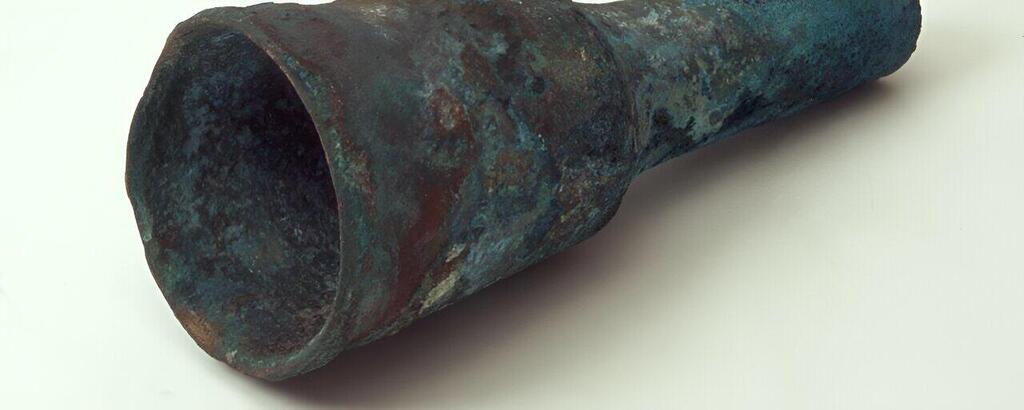Getting your Trinity Audio player ready...
A shipboard cannon was discovered off the western coast of Sweden, estimated to date back to the 14th century. According to estimations, this may be the oldest shipboard cannon ever discovered in Europe. A study’s findings shed new light on the early development of artillery on land and at sea but also suggest a challenging period for coastal residents.
More stories:
The shipboard cannon, made of cast bronze, was found by a diving enthusiast at a depth of 20 meters off the coast of Marstrand in western Sweden. It is believed to be a cannon that was installed on a sunken ship rather than a cargo vessel as remnants of burnt gunpowder were found inside it.
This discovery indicates the cannon found on the seabed was loaded and ready for use during wartime. "Thanks to the preserved remains of the charge, it has been possible to use radiocarbon dating to establish the age of the find," said Staffan von Arbin, a maritime archaeologist at the University of Gothenburg, who led the study.
The ancient cannon was scanned by researchers using 3D scanning technology, followed by a chemical analysis of the metal used for casting the cannon. The analysis revealed that the bronze alloy contained about 14% tin and only trace amounts of lead.
According to researchers, this alloy is far from optimal for casting cannons, suggesting the cannon may have been prone to cracking and becoming unusable, especially if it saw intensive and prolonged use.
"Clearly, the person who cast the cannon did not have the necessary knowledge and understanding of the properties of various copper alloys," von Arbin explained. “This shows that the noble art of cannon casting had not yet been fully mastered at that time, and that production was largely based on trial and error."
The analysis also revealed that the copper ore used in making the cannon likely came from present-day Slovakia, while the tin likely originated from England or the border region between Poland and the Czech Republic. In the interdisciplinary study published in The Mariner's Mirror journal, the researchers presented their analysis results, drawing from documentary, iconographic, and archaeological sources.
During the 14th century, the town of Marstrand, primarily known for its harbor, played a significant role in trade between Western Europe and the Baltic Sea region. However, its maritime space also saw much warfare and conflicts, often affecting coastal populations in the area. Additionally, the threat of pirates required these communities to further protect themselves.
The new types of weaponry developed during that early-modern period provided significant tactical advantages in naval battles, and not only warships were armed; merchant vessels often carried cannons as well to defend against pirates and other hostile naval vessels.
The study’s findings provide new insights into the development of artillery weapons and their usage during this period. Cannons resembling the one discovered near Marstrand are usually dated to the 15th and 16th centuries, though this discovery suggests the design existed as early as the 14th century.
"Now, of course, we also want to try to locate and document the ship that the cannon belonged to. Although it is probably severely degraded and broken up, it should be possible to find scattered remains of the wreck if we conduct a thorough inventory of the site and its surroundings," von Arbin said.




